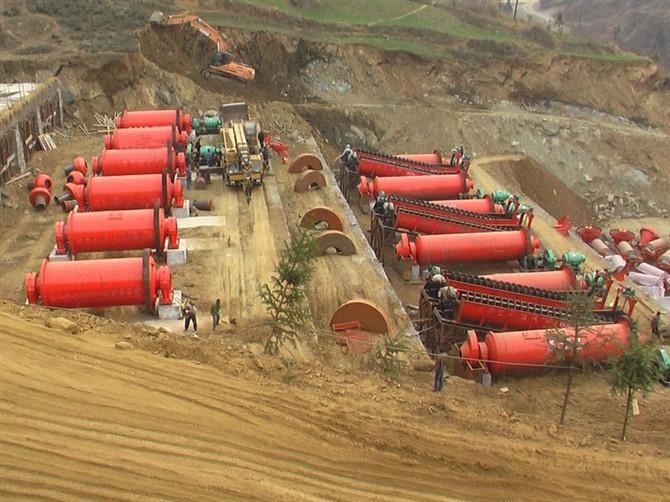Raymond Mill for Iron Ore Grinding: Key Features and Applications
Raymond Mill for Iron Ore Grinding: Key Features and Applications
In the mining and mineral processing industry, efficient grinding equipment plays a pivotal role in liberating valuable minerals from ore deposits. Among various grinding technologies available, Raymond Mill has established itself as a reliable workhorse for processing materials like iron ore, offering a balanced combination of performance, efficiency, and operational simplicity.

Understanding Raymond Mill Technology
Raymond Mill, also known as pendulum roller mill, operates on the principle of spring-loaded grinding rollers that rotate against a stationary grinding ring. The centrifugal force generated by the rotating main shaft causes the rollers to swing outward, pressing against the ring and crushing the material fed into the grinding chamber. A built-in classifier ensures that only properly sized particles exit the system, while oversize material returns for further grinding.
For iron ore applications, this grinding mechanism proves particularly effective. The moderate grinding pressure and controlled particle size distribution make Raymond Mill suitable for producing the specific fineness required for subsequent beneficiation processes. With an input size capability of <25 mm and capacity ranging from 0.6-5 tph, this equipment fits well in small to medium-scale iron ore processing operations.
Key Advantages for Iron Ore Processing
Several characteristics make Raymond Mill particularly suitable for iron ore grinding applications. The system’s compact design requires minimal floor space, an important consideration in mining operations where real estate comes at a premium. The relatively low investment cost compared to more complex grinding systems makes it accessible for operations with budget constraints.
Energy efficiency represents another significant advantage. The optimized grinding mechanism consumes less power per ton of processed material compared to traditional ball mills. This efficiency translates to lower operating costs, a crucial factor given the energy-intensive nature of grinding operations.
The environmental performance of modern Raymond Mills has also improved significantly. Advanced dust collection systems minimize particulate emissions, while noise reduction features create a better working environment. These characteristics align well with the increasingly stringent environmental regulations governing mining operations worldwide.

Beyond Traditional Raymond Mill: Advanced Alternatives
While traditional Raymond Mill serves many iron ore applications effectively, operations requiring ultra-fine grinding or higher capacity might consider more advanced alternatives. For instance, our MW Ultrafine Grinding Mill represents a significant technological advancement, capable of producing powders between 325-2500 meshes with remarkable efficiency.
The MW Ultrafine Grinding Mill incorporates several innovative features that benefit iron ore processing. Its newly designed grinding curves enhance grinding efficiency, yielding production capacity 40% higher than jet grinding mills and twice that of ball grinding mills, while consuming only 30% of the energy of jet grinding systems. The absence of rolling bearings and screws in the grinding chamber eliminates concerns about bearing damage or loose screws causing machine failure.
For operations prioritizing vertical grinding technology, the LUM Ultrafine Vertical Grinding Mill offers another compelling option. Integrating ultrafine powder grinding, grading, and transporting in a single unit, this mill features unique roller shell and lining plate grinding curves that generate material layers more easily. The reversible structure simplifies maintenance, while double position-limiting technology ensures operational stability even under challenging conditions.
Application-Specific Considerations
When selecting grinding equipment for iron ore, several factors warrant careful consideration. The specific characteristics of the ore, including hardness, moisture content, and liberation size, influence equipment selection. The target particle size distribution for downstream processes determines whether standard Raymond Mill suffices or if more specialized equipment like the MW Ultrafine Grinding Mill becomes necessary.
Operational factors such as required capacity, available space, and energy costs also impact the decision. In many cases, traditional Raymond Mill provides the optimal balance of performance and economy. However, for operations demanding higher efficiency, finer products, or larger capacity, the advanced technologies in our MW and LUM series offer compelling advantages.

Conclusion
Raymond Mill continues to be a valuable asset in iron ore processing, offering reliable performance, operational simplicity, and cost-effectiveness. For operations requiring more advanced capabilities, technologies like the MW Ultrafine Grinding Mill and LUM Ultrafine Vertical Grinding Mill provide enhanced efficiency, finer grinding capability, and improved operational features. Understanding the specific requirements of your iron ore processing operation enables selection of the most appropriate grinding technology to optimize performance and profitability.
Frequently Asked Questions
What is the maximum input size for Raymond Mill when processing iron ore?
Raymond Mill can process iron ore with a maximum input size of <25 mm, making it suitable for most crushing circuit outputs.
How does the capacity of Raymond Mill compare to other grinding technologies?
Raymond Mill offers capacities between 0.6-5 tph, which is ideal for small to medium operations. For higher capacity requirements, our LM Vertical Grinding Mill provides up to 340 tph.
What advantages does MW Ultrafine Grinding Mill offer for iron ore processing?
The MW Ultrafine Grinding Mill provides 40% higher capacity than jet mills, twice the yield of ball mills, and only 30% of the energy consumption of jet grinding systems, with adjustable fineness between 325-2500 meshes.
How does the environmental performance of modern grinding mills compare?
Advanced mills like our MW series feature efficient pulse dust collectors and mufflers that minimize dust and noise pollution, operating fully in compliance with national environmental protection standards.
What maintenance advantages do these grinding systems offer?
The MW Ultrafine Grinding Mill eliminates rolling bearings and screws in the grinding chamber, preventing related failures, while the LUM Ultrafine Vertical Grinding Mill features a reversible structure for easier maintenance access.
